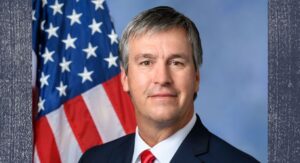Terri Sewell announces 7th District Congressional App Challenge
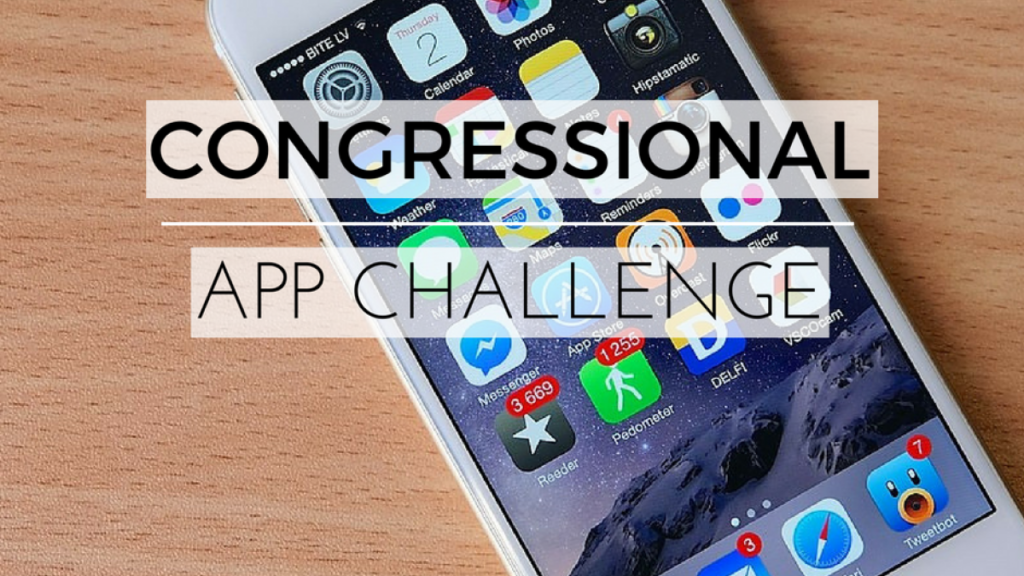
Alabama U.S. Rep. Terri Sewell announced that Alabama’s 7th Congressional District will be participating in the third annual Congressional App Challenge (CAC). Student coders have until Nov. 1 to submit their code original mobile, web, or desktop apps for the chance to be selected for recognition, win prizes, and have their work put on display in the Capitol Building in Washington, DC. “This year’s Congressional App Challenge dares students in my district to think big, test their coding skills, and to build something of their own,” said Sewell. “By developing strong science, technology, engineering, and math (STEM) skills, our students will put themselves in a position to compete for the jobs of tomorrow. I encourage all students to explore STEM education and enter the challenge. As the product of our state’s public schools, I know firsthand how important it is for us to give our youngest generation opportunities to learn about emerging technologies. I cannot wait to see what our students come up with and to recognize our district’s talented young people.” The CAC is a congressional initiative to encourage student engagement in coding and computer science through local app challenges hosted by the Members of Congress. The challenge was created because Congress recognized that computer science and STEM skills are essential for economic growth and innovation, and that the U.S. is currently experiencing a death of adequately trained technical talent. By some estimates there are nearly a quarter of a million unfilled programming jobs in the US, right now. Thus, the CAC is a congressional effort to maintain American competitiveness, by proactively inspiring America’s youth and encouraging them to pursue these crucial skills. The competition is open to all students K-12 who meet eligibility requirements, regardless of their coding experience. Submissions will be judged by a panel of expert judges and announced on November 21 on the following criteria: quality of the idea, including creativity and originality; implementation of the idea, including user experience and design; and demonstrated excellence of coding and programming skills. The winner from the 7th District will be featured on CongressionalAppChallenge.us, and the winning app will also be on display in the U.S. Capitol, honoring winners from across the country. Registration is open now.
Alabama football starts atop AP poll for 2nd straight year

Alabama is No. 1 in The Associated Press preseason college football poll for the second straight season and third time in five years. The Crimson Tide, coming off a last-second loss in the national championship game that left it No. 2 to Clemson in the final Top 25 of 2016, received 52 from a panel of 61 media members. Ohio State was No. 2, edging out No. 3 Florida State and preventing the first 1 vs 2 opening game since the AP preseason poll began in 1950. Alabama opens the season against the Seminoles in Atlanta on Sept. 2, just the fourth opener involving top-five teams and the first pitting teams ranked in the top three. Southern California starts the season at No. 4. Defending national champion Clemson begins the post-Deshaun Watson era at No. 5. Click here for full list of rankings. Republished with permission of The Associated Press.
Vladimir Putin appoints new Russian ambassador to US

A career Russian diplomat, who gained the reputation of a hawk during his earlier tenure at the Defense Ministry, was named the new ambassador to the United States on Monday. The 62-year old Anatoly Antonov was appointed to the job by President Vladimir Putin‘s order, according to the Kremlin. Antonov takes the job at a time when U.S.-Russia relations are badly strained following the approval of a new wave of U.S. sanctions against Moscow and the Kremlin’s decision to sharply cut the U.S. diplomatic personnel in Russia. He succeeds Sergei Kislyak, who found himself in the center of controversy amid claims of Russia’s interference in the U.S. presidential vote. Kislyak’s contacts with members of Trump’s team have been part of congressional and FBI investigations into possible collusion between Trump campaign and Russia. Russia has denied any interference in the U.S. election. Antonov joined the Foreign Ministry in 1978 and gradually rose through the ranks to take the job of the chief of the ministry’s security and disarmament department in 2004. As part of his job, he led negotiations on various international agreements, including the 2010 New START nuclear arms reduction treaty signed by the United States and Russia. In 2011, Antonov left the Foreign Ministry to become a deputy defense minister in charge of international ties. The job raised Antonov’s profile as he regularly delivered the Russian military’s statement to international media and foreign military attaches. When Russia-West relations sank to post-Cold War lows over the Ukrainian crisis and the war in Syria, Antonov’s visibility earned him a hawkish reputation. Like other senior Russian officials, Antonov minced no words amid the tensions over Moscow’s annexation of Crimea and support for pro-Russia insurgents in eastern Ukraine. Antonov accused the West of engineering the ouster of Ukraine’s former Russia-leaning president in February 2014 as part of efforts to “contain” Russia and waging what he described as an “information war” against it. He also claimed that the West has fueled the Ukrainian crisis in order to justify NATO’s existence and bolster military budgets. The European Union and Canada have put Antonov on their lists of Russian officials sanctioned for their role in the Ukrainian crisis. Antonov also served as the Russian military’s public face on Syria, where Moscow has waged an air campaign in support of President Bashar Assad’s army. Antonov’s stint at the Defense Ministry ended in 2016 and he returned to the Foreign Ministry, taking the post of a deputy minister. He has largely stayed out of the public eye since then. In May, when he met with lawmakers who considered his candidacy for the ambassador’s job, Antonov was quoted as saying that Moscow and Washington should normalize ties and engage in constructive cooperation. He said the U.S. and Russia must pool efforts in the fight against terrorism and work together to strengthen nuclear non-proliferation. Republished with permission of The Associated Press.
New poll gives Roy Moore nearly 20-point runoff lead over Luther Strange
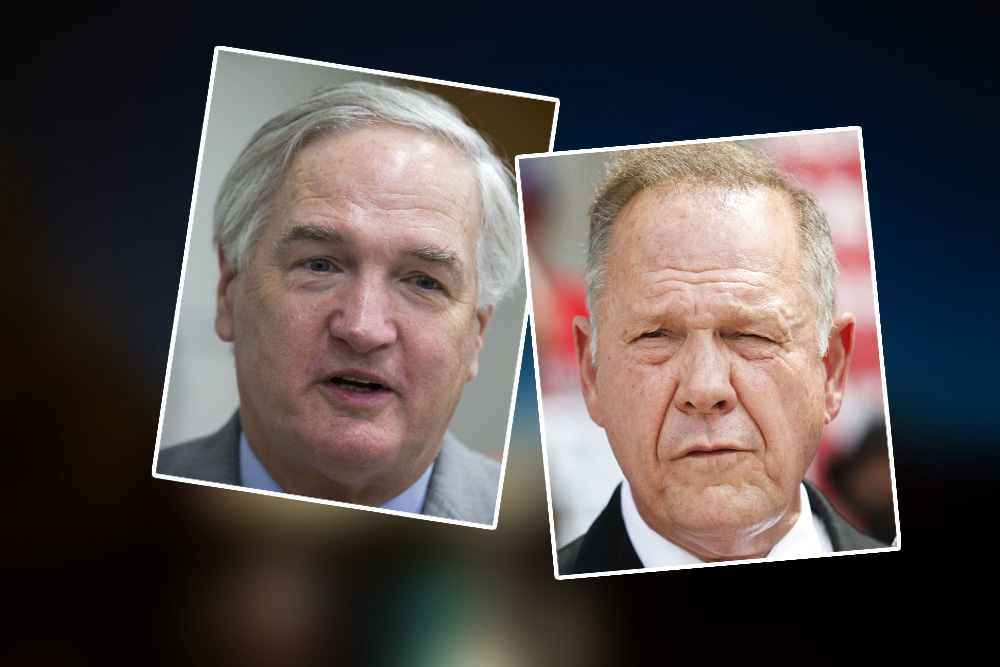
New polling released this weekend gives former Alabama Supreme Court Chief Justice Roy Moore a nearly 20-point lead over sitting Sen. Luther Strange in the Republican primary runoff for U.S. Senate. If the election were held today, 51 percent of respondents support Moore; 32 percent would vote for Strange. Another 17 percent said they were undecided. The poll, conducted by JMC Analytics, suggests three things: – Moore is surging into an early lead, bolstered by a large number of voters who did not support either runoff contender in the Aug. 15 primary. – Evangelical support is fueling Moore’s initial runoff lead. – Endorsements from both President Donald Trump and Senate Majority Leader Mitch McConnell are not helping Strange with voters. Moore is leading throughout most Alabama media markets, except Mobile. Much of that support came from voters who cast a ballot for one of the other primary candidates. Those who supported the “also-rans” went for Moore 51-26 percent, as well as many of those in the Huntsville area who initially supported Congressman Mo Brooks. In the poll, Moore now has a 52-29 percent lead in Huntsville. As for self-described evangelical Christians, Moore leads Strange 58-28 percent, while among non-evangelicals, Strange narrowly leads 42-39 percent. While Trump and McConnell have spent a considerable amount of political capital – as well as millions of dollars – supporting Strange, those efforts appear to have a limited effect. Trump’s endorsement only benefited Strange 25-23 percent (51 percent of respondents said it made little or no difference). McConnell’s support had the opposite effect, with many respondents – by a 45-10 percent margin – saying that it made them less likely to support strange The poll, conducted Aug. 17 and 19, used an automated landline sample of 515 likely primary voters (based on recent electoral participation) from the list of Alabama registered voters. The margin of error was +/- 4.3 percent, with a 95 percent confidence level. According to the polling memo, demographic breakdown respondents was 94 to 5 percent white/black, with the geographic breakdown: 42 percent from Birmingham, 6 percent from Dothan, 24 percent from Huntsville, 15 percent from Mobile, and 13 percent from Montgomery. The winner of the Sept. 26 runoff between Moore and Strange will face Democratic nominee Doug Jones in a December election to determine who will serve the remainder of Attorney General Jeff Sessions‘ Senate term.
UAB urges public to protect eyes from long-term damage while viewing the eclipse

Watching the captivating sight of the moon’s passing between the sun and Earth, where the moon fully or partially covers the sun, could cause serious and potentially long-term harm to the eyes if not viewed properly. Eye specialists from the University of Alabama at Birmingham offer tips on eye safety during the eclipse to avoid post-exposure symptoms like pain, red eyes, light sensitivity, tearing or watery eyes, blurry vision and many others. “It is never safe to stare directly into the sun, and that includes during the eclipse,” said Tamara Oechslin, O.D., Ph.D., assistant professor in the UAB School of Optometry. To protect your eye health, wear NASA-approved solar eclipse glasses. (UAB) “Parts of the country will see partial coverage, while others will see full coverage. It will never be safe to view the eclipse without eye protection unless you are in a zone with complete coverage and, then, only during those two minutes of complete coverage, or totality.” According to NASA, all of North America will be treated to an eclipse of the sun today. This is the first of its kind in the United States since 1979. Anyone within the path of totality can see a total solar eclipse, and observers outside this path will see a partial solar eclipse. NASA released the 2017 total solar eclipse path map to help viewers identify the amount of coverage that will be seen in their area. Viewers can also use the interactive solar eclipse Google map to find the type of eclipse that will be seen in a particular region. “The best option to view an eclipse safely is to wear solar eclipse glasses approved by the International Organization for Standardization,” said Tyler A. Hall, M.D., assistant professor from the UAB School of Medicine’s Department of Ophthalmology. Standard sunglasses, regardless of ultraviolet markings, including UVA and UVB, will not provide enough protection for eclipse viewing due to the intensity of the rays. The sun’s rays may be partly blocked during an eclipse, but the remaining visible rays are still intense enough to cause serious eye damage or even loss of vision. Protective eyewear should have an ISO 12312-2 marking on them to be considered safe for looking at the sun. When a viewer is in the total coverage zone and during the brief two-minute period of total coverage, the solar eclipse can be viewed without wearing the approved eclipse glasses. The sun’s rays are blocked in this zone, allowing viewers to remove the glasses for a brief time to see the total eclipse. Viewers in the partial eclipse zones should wear protective eyewear the entire time. “The only exception to the rule of strictly wearing solar eclipse glasses while viewing the eclipse is that you can remove your eclipse glasses if you are viewing a total eclipse when all the sun’s rays become blocked,” Hall said. “Most people, however, will be viewing a partial eclipse, which should be seen only through solar eclipse glasses.” Oechslin suggests the only safe way to look directly at the uneclipsed or partially eclipsed sun is through special-purpose solar filters, such as eclipse glasses or hand-held solar viewers. She suggests certain filters to view the solar eclipse, including specialty eclipse glasses or a welder’s helmet. An educational activity she recommends for children is to make pinhole cameras for viewing the shadow of the moon’s path across the sun. These cameras are not to look through, but to watch the small shadow on the ground. Directions for making a pinhole camera and its use can be found online. Oechslin highly recommends NASA’s do’s and don’ts while viewing the solar eclipse: Always inspect your solar filter before use; if scratched or damaged, discard it. Read and follow any instructions printed on or packaged with the filter. Always supervise children using solar filters. Stand still and cover your eyes with your eclipse glasses or solar viewer before looking up at the bright sun. After glancing at the sun, turn away and remove your filter – do not remove it while looking at the sun. Do not look at the uneclipsed or partially eclipsed sun through an unfiltered camera, telescope, binoculars or other optical device. Similarly, do not look at the sun through a camera, a telescope, binoculars or any other optical device while using your eclipse glasses or hand-held solar viewer — the concentrated solar rays will damage the filter and enter your eye(s), causing serious injury. Seek expert advice from an astronomer before using a solar filter with a camera, telescope, binoculars or any other optical device. If you are within the path of totality and only during the brief two-minute period of totality, remove your solar filter only when the moon completely covers the sun’s bright face and it suddenly gets quite dark. Experience totality; then, as soon as the bright sun begins to reappear, replace your solar viewer to glance at the remaining partial phases. There are no specific alerts to stop someone from looking directly at an eclipse in order to avoid damage, regardless of whether they are wearing appropriate eclipse glasses. Hall recommends limiting viewing the solar eclipse to three minutes or less, even with approved solar eclipse glasses. “If the essential guidelines are adhered to, eye damage is extremely unlikely to occur,” Hall said. “Should damage occur, it typically takes the form of blurred vision or blind spots that develop several hours after the viewing occurred.” Ocular damage from the sun can be rather serious and can severely damage the front surface and inside of the eye. Two types of eye damage can occur from overexposure to the sun: photokeratitis, damage to the front surface; and solar retinopathy, damage to the inside or back of the eye. “Persons should seek medical attention immediately if experiencing any post-exposure symptoms, especially if the condition is worsening with time,” Oechslin said. “Just as with a sunburn, delayed symptoms can also occur several hours after overexposure.” Symptoms of photokeratitis include eye pain, burning or red eyes, light sensitivity, blurred vision, watery eyes, and/or swelling around the eye or eyelid.
US and South Korean troops start drills amid North Korea standoff
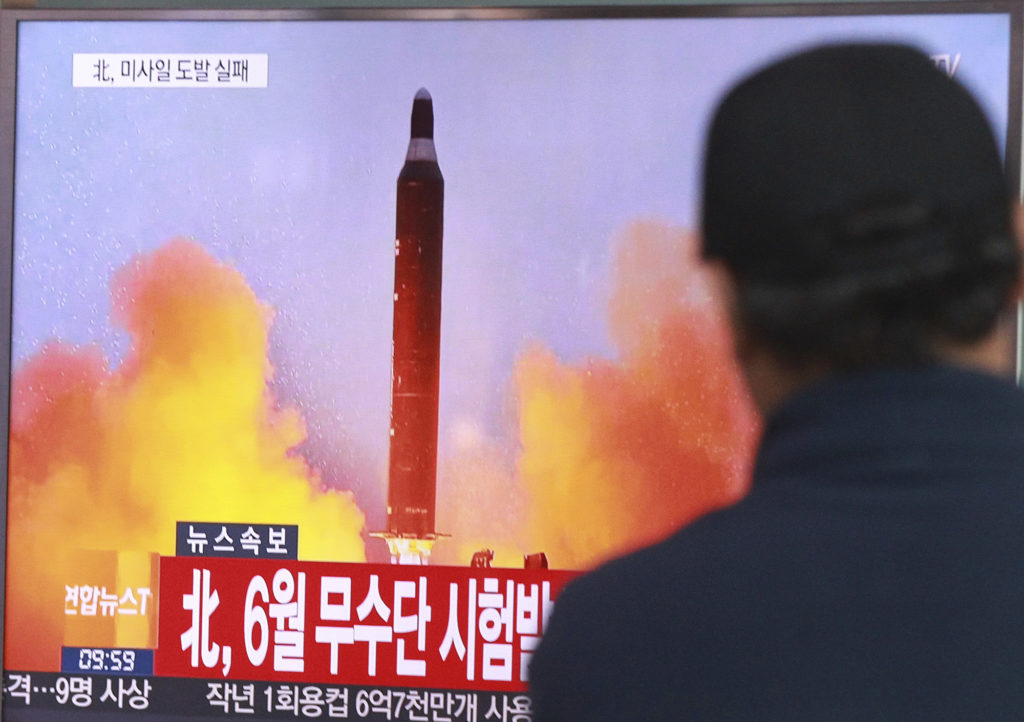
U.S. and South Korean troops kicked off their annual drills Monday that come after President Donald Trump and North Korea exchanged warlike rhetoric in the wake of the North’s two intercontinental ballistic missile tests last month. The Ulchi Freedom Guardian drills are largely computer-simulated war games held every summer and have drawn furious responses from North Korea, which views them as an invasion rehearsal. Pyongyang’s state media on Sunday called this year’s drills a “reckless” move that could trigger the “uncontrollable phase of a nuclear war.” Despite the threat, U.S. and South Korean militaries launched this year’s 11-day training on Monday morning as scheduled. The exercise involves 17,500 American troops and 50,000 South Korean soldiers, according to the U.S. military command in South Korea and Seoul’s Defense Ministry. No field training like live-fire exercises or tank maneuvering is involved in the Ulchi drills, in which alliance officers sit at computers to practice how they engage in battles and hone their decision-making capabilities. The allies have said the drills are defensive in nature. South Korea’s President Moon Jae-in said Monday that North Korea must not use the drills as a pretext to launch fresh provocation, saying the training is held regularly because of repeated provocations by North Korea. North Korea typically responds to South Korea-U.S. military exercises with weapons tests and a string of belligerent rhetoric. During last year’s Ulchi drills, North Korea test-fired a submarine-launched ballistic missile that flew about 500 kilometers (310 miles) in the longest flight by that type of weapon. Days after the drills, the North carried out its fifth and biggest nuclear test to date. Last month North Korea test-launched two ICBMs at highly lofted angles, and outside experts say those missiles can reach some U.S. parts like Alaska, Los Angeles or Chicago if fired at normal, flattened trajectories. Analysts say it would be only a matter of time for the North to achieve its long-stated goal of acquiring a nuclear missile that can strike anywhere in the United States. Earlier this month, President Donald Trump pledged to answer North Korean aggression with “fire and fury.” North Korea, for its part, threatened to launch missiles toward the American territory of Guam before its leader Kim Jong Un backed off saying he would first watch how Washington acts before going ahead with the missile launch plans. Republished with permission of The Associated Press.
Bradley Byrne: Improvements for Alabama’s veterans

In my office, there is no greater priority than ensuring veterans are appropriately taken care. These men and women sacrificed so much for our country, and it is imperative they receive the attention, help, and care they deserve and were promised. Recently, we had a number of important breakthroughs for veterans in Southwest Alabama. From legislative victories in Washington to progress right here on the Gulf Coast, I want to briefly update you on some of the recent improvements for Alabama’s veterans. Most notably, last week we broke ground on the new VA outpatient clinic in Mobile. Building a new clinic has long been at the top of my priority list since being elected to Congress. I have held multiple meetings with VA officials, sent letters to VA leadership, and demanded progress. As those shovels hit dirt last week, it was a major accomplishment. The clinic will replace the current outdated and small clinic on Springhill Avenue. That building was never intended to serve as a VA clinic, and it lacked many of the basic infrastructure needs for a clinic serving around 11,000 veterans a year. The new, 65,000 square feet clinic will be conveniently located right off I-10 in Tillman’s Corner. This location should be easy for local veterans to access, and the clinic will have adequate public parking. The new clinic will provide space for primary care, audiology and speech pathology, education, eye clinics, mental health, patient advocacy, radiology, Veterans’ Service Organizations, and women’s health. The clinic should be up and running by the end of 2018 or early 2019, depending on construction conditions. Rest assured, I will continue to provide diligent oversight throughout the construction process to ensure things move forward. Other positive developments for our veterans came in the form of new, bipartisan legislation passed in Congress. Despite the reporting by the national news media, Congress has actually come together in a bipartisan way on multiple occasions this year to pass bills important to veterans. For example, we passed the VA Accountability and Whistleblower Protection Act. This bill makes it easier to remove or demote VA employees who simply are not getting the job done. The bill also increases protections for whistleblowers who speak out about problems at the VA. VA employees should work in a culture of accountability and openness instead of a culture of complacency and deceit. Also this year, President Donald Trump signed the Harry W. Colmery Veterans Educational Assistance Act of 2017 into law. This landmark legislation removes time restrictions relating to the use of benefits under the GI Bill. Instead of the current 15 year timeline, the bill clarifies that veterans may use their GI Bill education benefits for the duration of their life. Just as important, the bill helps cut down on bureaucratic costs and confusion by consolidating the programs into just a single program relating to the GI Bill. The federal government, VA included, could always use more simplicity and less bureaucratic mess. Finally, Congress recently passed legislation to ensure funding for the VA Choice Card program does not expire. This program is important because it increases veteran access to private medical care outside of the VA system. I am committed to making even more reforms to the program to ensure every veteran has the option of seeking care from doctors and hospitals in their local community. As you can see, taking care of our veterans has been a top priority, but also a bipartisan issue that brings Republicans and Democrats together. We must continue working to reform the VA and take care of those who have given so much to our country. • • • Bradley Byrne is a member of U.S. Congress representing Alabama’s 1st Congressional District.
SPLC asks Alabama to restore voters to ‘active’ status by next month
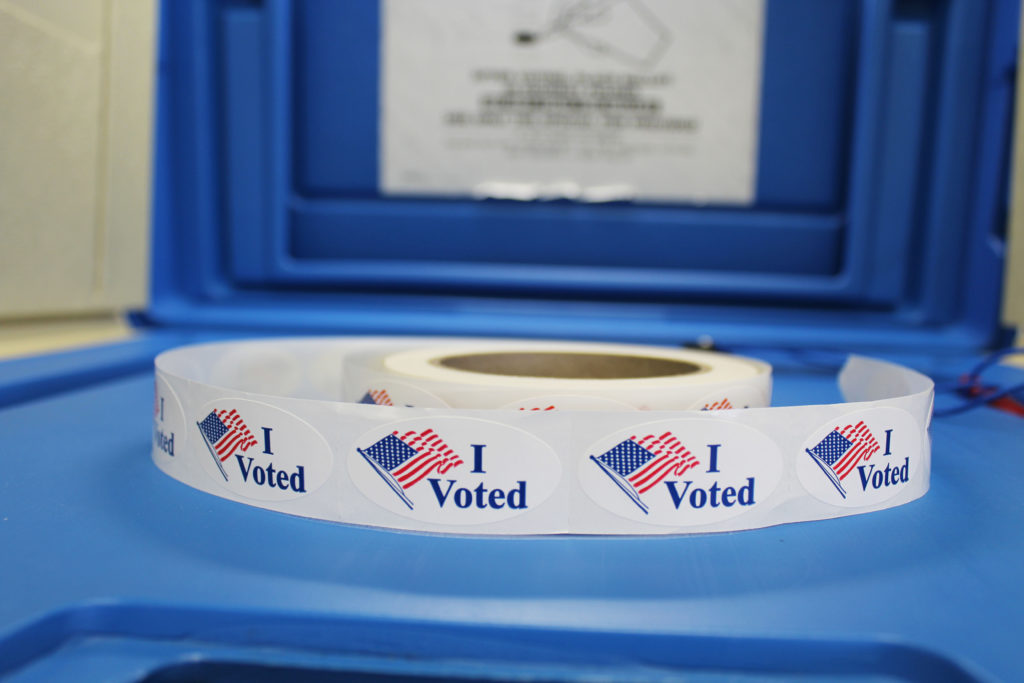
Last Tuesday, Alabama voters across the state fund themselves listed as inactive when they arrived at the polls to vote in the special U.S. Senate primary. Now the Southern Poverty Law Center (SPLC) is asking Alabama Secretary of State John Merrill to reinstate those roughly 340,162 Alabamian voters before the September 26 Senate runoff. According to the federal National Voter Registration Act (NVRA) as well as state laws, every four years cards are sent to voters to verify voter addresses in order to maintain their “active” voting status. If they’re marked “return to sender” twice, the voter is put on the inactive list. In a Friday letter to Merrill, the SPLC said they believers voters were inaccurately moved to inactive and the state’s process was “deeply flawed” and that it was “imperative you take immediate corrective action to return inactive voters to the active voting list.” Inactive voters are able to restore their active status by filling out a form at the polls, but the SPLC says that process may dissuade voters from showing up to vote. Voters who are unsure of their voting status may check it online here. To check via phone voters can call the Secretary of State’s Office at (334) 242-7210 or at their local board of registrars office.
Alabama readying for solar eclipse

Alabamians from the Tennessee Valley to the coast are getting ready to view the solar eclipse on Monday. The area of totality is north and east of Alabama along a line extending from Nashville, Tennessee to Columbia, South Carolina. But midday skies will still darken across much of the state. Stores in northern Alabama are selling thousands of protective glasses to view the sun, and the University of Alabama in Huntsville has an eclipse-watching party. The McWane Science Center in Birmingham is having a viewing party atop its parking deck. Near Mobile, about 900 students at Saraland Elementary School will watch the eclipse on television after officials canceled plans to let them watch outdoors. At least two state school systems are dismissing early since they couldn’t provide glasses to students. Republished with permission of The Associated Press.
State board approves psychiatric bed shift between hospitals

An Alabama board has approved a plan to move inpatient psychiatric care from one hospital to its sister facility. The Alabama Certificate of Need Review Board approved the move from Eliza Coffee Memorial Hospital in Florence to Shoals Hospital in Muscle Shoals, the Times Daily reported. Shoals Hospital asked for state permission to move the license for 20 beds specified for adult inpatient psychiatric care from ECM to Shoals Hospital. The board was told that all of the ECM staff would transfer five miles to Shoals Hospital. “It’s the most efficient way to offer this service to our community,” said hospital CEO Russell Pigg. Shoals Hospital operates a 30-bed senior care center for patients 55 and older with Alzheimer’s and dementia-related disorders. The hospital plans to purchase $250,000 in new equipment. Hospital officials say they hope the move will be completed by the fall of 2018. Shoals Hospital CEO Kidada Hawkins said in a news release that the move is an “important service and growth opportunity” at Shoals. “By bringing together the psychiatric services for the community, we’re not only better serving the needs of our psychiatric patient population today, but we’re also developing synergies that will allow us to meet future needs for them as those arise,” he said. The hospital can move forward with a $5.3 million construction project to relocate current second-floor departments to the first floor, and ready the second floor space for psychiatric care. Republished with permission of The Associated Press.
Donald Trump will address path forward on Afghanistan

Signaling that the U.S. military expects its mission to continue, the top U.S. commander in Afghanistan on Sunday hailed the launch of the Afghan Army’s new special operations corps, declaring that “we are with you and we will stay with you.” Gen. John Nicholson‘s exhortation of continued support for the Afghans suggested the Pentagon may have won its argument that America’s military must stay engaged in the conflict in order to insure terrorists don’t once again threaten the U.S. from safe havens in Afghanistan. The White House announced that President Donald Trump would address the nation’s troops and the American people Monday night to update the path forward in Afghanistan and South Asia. Nicholson, speaking prior to the White House announcement, said the commandos and a plan to double the size of the Afghan’s special operations forces are critical to winning the war. “I assure you we are with you in this fight. We are with you and we will stay with you,” he said during a ceremony at Camp Morehead, a training base for Afghan commandos southeast of Kabul. The Pentagon was awaiting a final announcement by Trump on a proposal to send nearly 4,000 more U.S. troops to Afghanistan. The added forces would increase training and advising of the Afghan forces and bolster counterterrorism operations against the Taliban and an Islamic State group affiliate trying to gain a foothold in the country. The administration has been at odds for months over how to craft a new strategy for the war in Afghanistan amid frustrations that 16 years after 9/11 the conflict is stalemated. The Afghan government only controls half of the country and is beset by endemic corruption and infighting. The Islamic State group has been hit hard but continues to attempt major attacks, insurgents still find safe harbor in Pakistan, and Russia, Iran and others are increasingly trying to shape the outcome. At this point, everything the U.S. military has proposed points to keeping the Afghan government in place and struggling to turn a dismal quagmire around. U.S. Defense Secretary Jim Mattis said he is satisfied with how the administration formulated its new Afghanistan war strategy. But he refused to talk about the new policy until it was disclosed by Trump. He said the deliberations, including talks at the Camp David presidential retreat on Friday, were done properly. “I am very comfortable that the strategic process was sufficiently rigorous,” Mattis said, speaking aboard a military aircraft on an overnight flight from Washington to Amman, Jordan. Months ago, Trump gave Mattis authority to set U.S. troop levels in Afghanistan, but Mattis said he has not yet sent significant additional forces to the fight. He has said he would wait for Trump to set the strategic direction first. Trump wrote on Twitter on Saturday that he had made decisions at Camp David, “including on Afghanistan,” but he did not say more about it. The expectation had been that he would agree to a modest boost in the U.S. war effort, while also addressing broader political, economic and regional issues. Mattis said Trump had been presented with multiple options. He did not name them, but others have said one option was to pull out of Afghanistan entirely. Another, which Mattis had mentioned recently in Washington, was to hire private contractors to perform some of the U.S. military’s duties. At Camp Morehead, lines of Afghan commandos stood at attention as Afghanistan President Ashraf Ghani and a host of proud dignitaries sat under flag-draped canopies and welcomed the advancement in their nation’s long-struggling military. In short remarks to the force, Nicholson said a defeat in Afghanistan would erode safety in the U.S. and “embolden jihadists around the world.” That’s why, he said, the U.S. is helping to double the size of the Afghan commando force, adding that the ceremony “marks the beginning of the end of the Taliban.” Maj. Gen. James Linder, the head of U.S. and NATO special operations forces in Afghanistan, said the nearly 4,000 troops requested by the Pentagon for Afghanistan includes about 460 trainers for his staff to help increase the size of the special operations forces. He said he’d be able expand training locations and insure they have advisers at all the right levels, including on the new Afghan special operations corps staff. According to a senior U.S. military officer in Kabul, increasing the number of American troops would allow the military to quickly send additional advisers or airstrike support to two simultaneous operations. Right now, the official said, they can only do so for one. The officer said it would allow the U.S. to send fighter aircraft, refueling aircraft and surveillance aircraft to multiple locations for missions. The officer was not authorized to discuss the details publicly so spoke on condition of anonymity. Afghan military commanders have been clear that they want and expect continued U.S. military help. Pulling out American forces “would be a total failure,” Col. Abdul Mahfuz, the Afghan intelligence agency chief for Qarahbagh, north of Kabul, said Saturday. And he said that substituting paid contractors for U.S. troops would be a formula for continuing the war, rather than completing it. Mahfuz and other Afghan commanders spoke at a shura council meeting at Bagram air base attended also by U.S. military officers and Afghan intelligence officials. Col. Abdul Mobin, who commands an Afghan mechanized battalion in the 111th Division, said any reduction in the U.S. military presence “leads to total failure.” Speaking through an interpreter, he added that operations by Afghan and U.S. special operations forces have been very effective, and that “the presence of U.S. military personnel is felt and considered a positive step for peace.” He said he’d like to see an additional 10,000 American troops in the country. Republished with permission of The Associated Press.
Former health chiefs to Donald Trump: Avoid new ‘Obamacare’ crisis
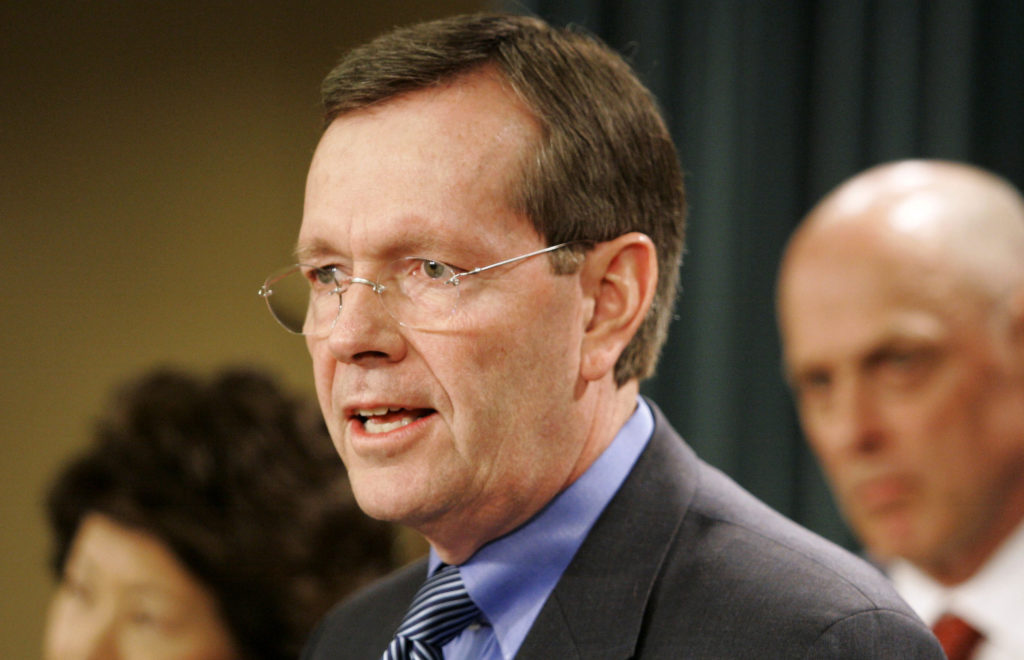
Don’t make things worse. That’s the advice of former U.S. health secretaries of both parties to President Donald Trump and the GOP-led Congress, now that “Obamacare” seems here for the foreseeable future. The 2018 sign-up season for subsidized private health plans starts Nov. 1, with about 10 million people currently served through HealthCare.gov and its state counterparts. Stability should be the immediate goal, said former Health and Human Services secretaries Kathleen Sebelius, Mike Leavitt and Tommy Thompson. At minimum: Dispel the political and legal uncertainty – fueled by presidential tweets – around billions in subsidies for consumers’ insurance copays and deductibles. The three former officials shared their views with The Associated Press. Beyond the urgent need to calm markets by providing clarity on subsidies, Democrat Sebelius and Republicans Leavitt and Thompson differ on the direction Trump and Congress should take. They agree that Republicans still have an opportunity to put their stamp on the Affordable Care Act, even if the drive to “repeal and replace” former President Barack Obama‘s legacy program appears to have hit a dead end. “They can make changes that signal a new ideological direction without generating a logistical and political mess,” said Leavitt, who led HHS during former President George W. Bush‘s second term. “They won the right to make changes. However, they should do it in a skillful way.” Leavitt shepherded the Medicare prescription drug benefit through its rocky rollout in 2006. “Stabilizing the current situation can only – I think – be to their benefit,” Sebelius said of the Trump administration. “In an environment in which (insurance) companies are enrolling customers, they’ve got a lot of time to actually go back to the drawing board and figure this out. The worst of all worlds for them would be to have the current situation unravel because of decisions by this administration.” Sebelius helped steer Obama’s law through Congress and later oversaw the troubled launch of HealthCare.gov, when the computer system locked up on the first day of sign-up season, frustrating millions of consumers and embarrassing the White House. She took the heat, but Sebelius stayed on task and ultimately helped deliver a successful open enrollment. “It would be a mistake to further destabilize the (insurance) market,” said Thompson, who served during Bush’s first term and led HHS preparations to meet the bioterrorism threat after the deadly anthrax mailings that followed closely the Sept. 11 attacks. Thompson urged a health care summit between Trump and congressional leaders of both parties, followed by a period of intensive legislative work under a deadline to reach a truce in the political battle over health care. Trump and top lieutenants like HHS Secretary Tom Price have sent mixed signals. Leading congressional Republicans want to try to move limited legislation after lawmakers return next month, worried they’ll suffer consequences in next year’s midterm elections. At the very least such legislation would provide clear legal authority for the ACA’s cost-sharing subsidies, which reduce copays and deductibles for people with modest incomes. Stopping the payments would lead to a spike in premiums, more insurers leaving the markets and increased federal deficits, the Congressional Budget Office warned last week. The markets already saw steep premium increases this year, and more insurers have since bailed out, citing financial losses. The administration has continued to make monthly subsidy payments to insurers, as recently as last week. But Trump on Twitter and in interviews has repeatedly threatened to pull the plug. Sebelius has been sharply critical of the Trump administration’s stewardship of the ACA. Two of the former health secretaries – Leavitt and Sebelius – said states are now likely to assume a bigger role in shaping the future of Obama’s law. A waiver pathway for states was built into the law, and Republicans want to make it less restrictive. That’s a key focus for Senate Health, Education, Labor and Pensions Committee Chairman Lamar Alexander, R-Tenn., as he plans bipartisan hearings this fall with Democratic counterpart Patty Murray of Washington. Leavitt sees waivers as a way to provide states more flexibility to tailor their insurance market rules to local needs and preferences. Sebelius says that should not be done in a way that undermines federal consumer protections like standard benefits. She’d like to see states use waivers to help offset the cost of care for the sickest patients. Thompson says he believes a bigger deal, at the federal level, is still possible if Trump plays his cards right with Congress. Former HHS Secretary Sylvia Burwell, who served during most of Obama’s second term, declined interview requests. Republished with permission of The Associated Press.


